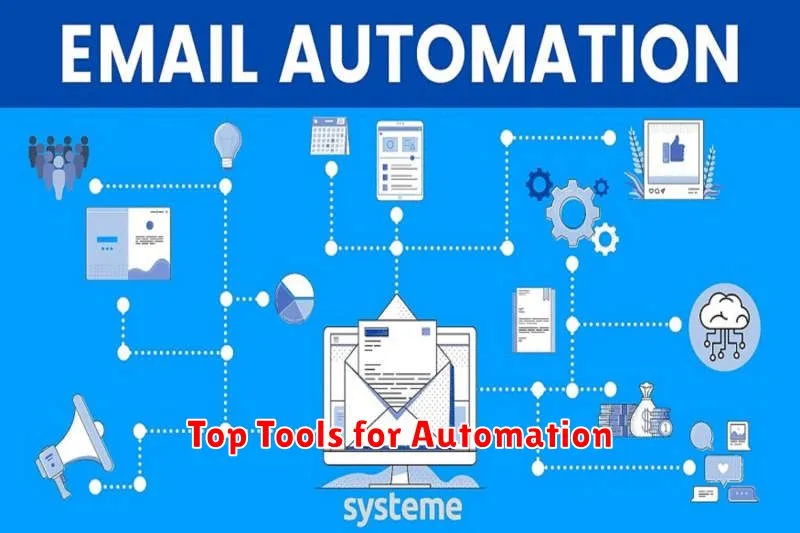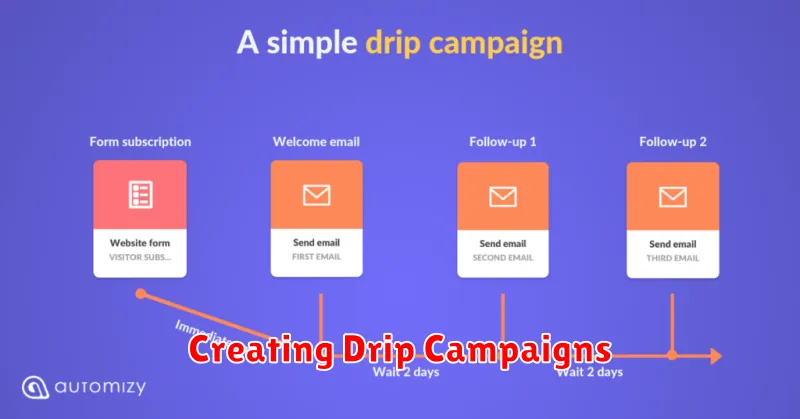In today’s fast-paced digital landscape, email marketing remains a cornerstone of successful marketing strategies. However, managing email campaigns manually can be time-consuming and inefficient. Email automation tools offer a powerful solution, empowering businesses to streamline their email marketing efforts, personalize communications, and ultimately, achieve higher conversion rates. This article explores the benefits of leveraging email automation tools for smarter, more effective campaigns, examining key features and their impact on driving business growth. From automating welcome emails and nurturing leads to segmenting audiences and analyzing campaign performance, we’ll delve into how these tools can transform your email marketing strategy. Discover how to create targeted, personalized emails that resonate with your audience, boosting engagement and maximizing your return on investment.
Choosing the right email automation tools can be a game-changer for your business, allowing you to scale your efforts efficiently while maintaining a personalized touch. Email automation allows you to deliver the right message to the right person at the right time, fostering stronger customer relationships and ultimately, driving sales. This article will guide you through the key considerations when selecting email automation software, discussing features such as email sequencing, A/B testing, and campaign analytics. Whether you’re a small business owner or part of a large marketing team, understanding the capabilities of email automation tools is crucial for creating smarter, data-driven campaigns that yield measurable results. We’ll also explore best practices for implementing these tools effectively, ensuring your email automation strategy aligns with your overall marketing goals.
What is Email Automation?
Email automation is the use of software to automate and streamline email marketing processes. It allows businesses to send targeted, personalized emails to their subscribers at scale, without manual intervention.
Instead of crafting and sending individual emails, you create automated workflows that trigger emails based on specific actions, behaviors, or events. These triggers can include things like signing up for a newsletter, making a purchase, abandoning a shopping cart, or reaching a certain milestone.
Benefits of email automation include increased efficiency, improved deliverability, personalized messaging, enhanced customer engagement, and better tracking and reporting.
Top Tools for Automation

Choosing the right email automation tool can significantly impact the effectiveness of your campaigns. Several leading platforms offer robust features to streamline your email marketing efforts.
Key Features to Consider
When evaluating email automation tools, prioritize key features such as segmentation capabilities, allowing you to target specific audiences with personalized content. A/B testing functionality is crucial for optimizing email subject lines, content, and send times. Integration with your existing CRM is also essential for a seamless data flow.
Recommended Tools
Below are a few highly-regarded email automation platforms:
- Platform A: Known for its user-friendly interface and robust analytics.
- Platform B: Offers advanced automation workflows and dynamic content personalization.
- Platform C: Provides a comprehensive suite of marketing tools, including email automation, at a competitive price point.
Carefully consider your specific needs and budget when selecting a tool. Investing in the right platform can drastically improve your email campaign performance.
Creating Drip Campaigns

Drip campaigns are automated email sequences sent to specific segments of your audience over a predefined period. They’re designed to nurture leads, onboard new customers, or re-engage existing ones with targeted, relevant content.
A key advantage of drip campaigns is their ability to deliver personalized messages based on user behavior or demographics. This allows for more effective communication and higher conversion rates.
Building a successful drip campaign involves several crucial steps:
- Define your target audience: Identify the specific group you want to reach with the campaign.
- Establish your campaign goals: Determine the desired outcomes, such as increased sales or improved customer engagement.
- Craft compelling content: Create a series of emails that provide valuable information, address customer needs, and encourage desired actions.
- Set the campaign schedule: Define the frequency and timing of email delivery to optimize engagement without overwhelming recipients.
- Analyze and refine: Monitor campaign performance metrics and make adjustments as needed to improve results.
By using email automation tools, you can streamline the creation, management, and optimization of your drip campaigns, saving time and resources while maximizing impact.
Personalizing Content for Engagement
In the realm of email marketing, personalization is paramount. Generic blasts often fall flat, failing to resonate with individual recipients. Targeted content, however, fosters a sense of connection and significantly increases engagement.
Email automation tools empower marketers to deliver personalized experiences at scale. By leveraging data such as demographics, purchase history, and website activity, these tools can tailor email content to individual preferences and needs. This includes customizing subject lines, greetings, product recommendations, and even email send times.
Dynamic content takes personalization a step further. Instead of creating separate emails for different segments, dynamic content allows you to insert personalized elements within a single email template. This ensures each recipient sees the most relevant information based on their unique profile.
Monitoring and Analyzing Results
Monitoring the performance of your automated email campaigns is crucial for maximizing their effectiveness. Track key metrics such as open rates, click-through rates, conversion rates, and unsubscribe rates.
Analyzing these metrics helps you understand what’s working and what’s not. Identify trends and patterns to optimize your campaigns for better engagement and ROI. For example, low open rates may indicate issues with your subject lines, while low click-through rates could suggest problems with your email content or call to action.
Most email automation tools provide built-in analytics dashboards that visualize these key performance indicators (KPIs). Use these dashboards to gain insights into your audience’s behavior and refine your email strategies.
Consider A/B testing different elements of your emails, such as subject lines, calls to action, or email content, to determine what resonates best with your target audience.

